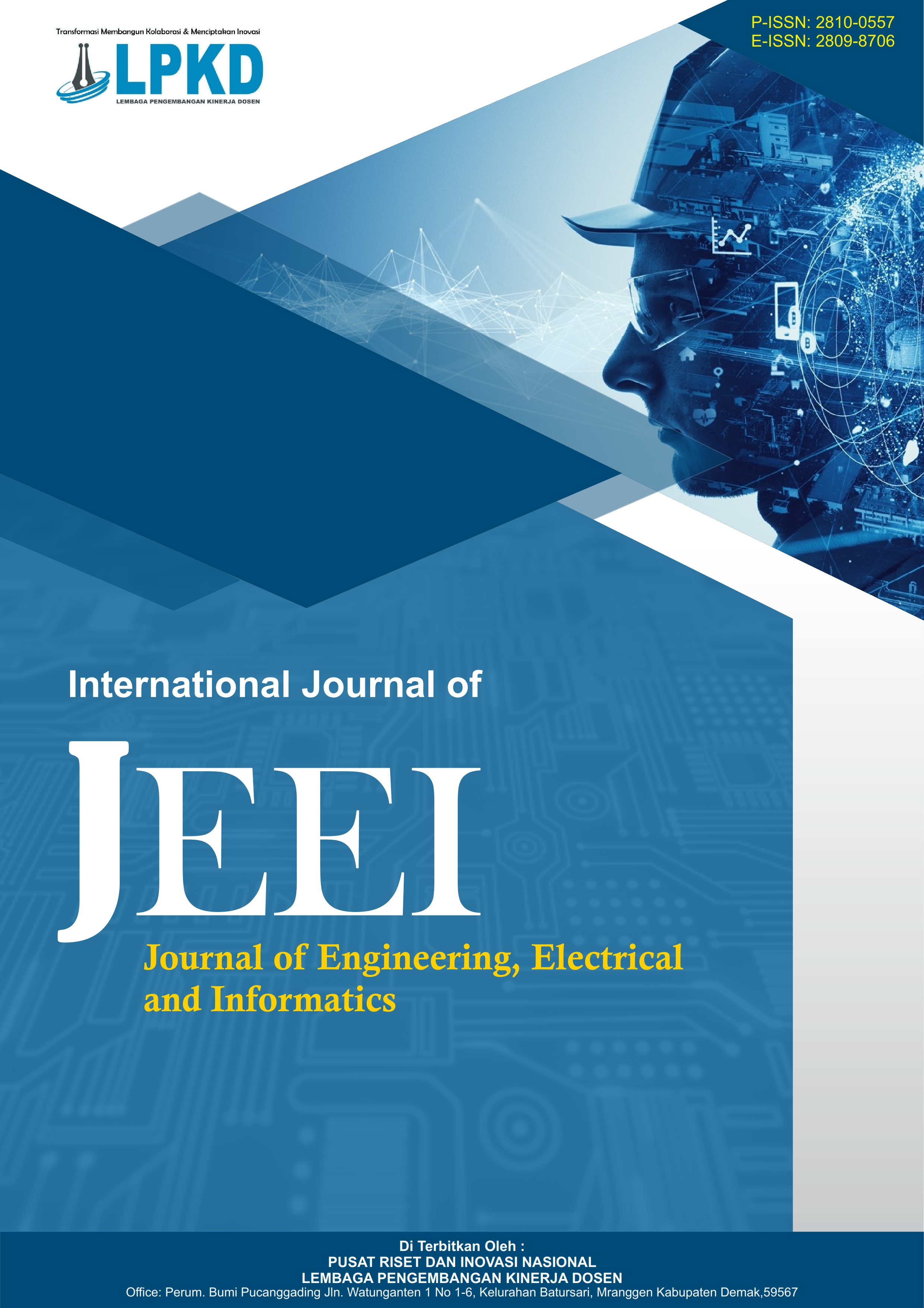Analysis of Mode Choice Between Damri Bus and Taxi Services as an Effort to Improve Passenger Transportation Services
(Case Study: Gemeh–Melonguane)
DOI:
https://doi.org/10.55606/jeei.v5i2.4752Keywords:
Mode Selection, Transportation Choice, Binomial Logit, Damri Bus, Taxi ServiceAbstract
The Gemeh–Melonguane route experiences a high volume of passenger trips, with noticeable competition between Damri buses and taxis as the primary transportation modes. Passengers' mode selection is influenced by various individual considerations and situational factors. This study aims to examine the characteristics and key factors affecting passenger decisions in choosing between Damri buses and taxis on this route. A descriptive quantitative method is applied, combining descriptive analysis to explain user characteristics with multiple linear regression to identify significant influencing factors. The regression results are then processed using a binomial logit model to estimate the probability of mode choice. The utility function derived from the regression analysis is Yubd = -3.027 + 2.417X10 + 3.85X23 + 4.052X24 + 4.659X31 + 4.289X32 + 3.388X33 + 2.352X34 - 3.653X61 - 4.377X62 - 2.629X72 + 1.325X82. Six variables were found to significantly influence mode selection: gender (X1), age (X2), occupation (X3), luggage weight (X6), reason for choosing the mode (X7), and service perception (X8). The coefficients of these variables were input into the binomial logit model to determine the likelihood of choosing each transport mode. The findings reveal that the probability of selecting Damri buses is 82%, while the likelihood of choosing taxis is 18%. These results indicate that Damri buses are more likely to be chosen due to factors such as affordability, convenience, and passenger demographics.
References
O. Z. Tamin, Perencanaan dan Permodelan Transportasi, Edisi Pertama. Bandung: Institut Teknologi Bandung, 2000.
A. Supangat, Statistika dalam Kajian Deskriptif, Inferensi, dan Nonparametrik, Edisi Pertama. Jakarta: Kencana Prenada Media Group, 2007.
F. Miro, Perencanaan Transportasi. Jakarta: Erlangga, 2005.
S. Indriany, A. Widyantoro, and I. Wangsa, “Analisis Pemilihan Moda dengan Model Multinomial Logit untuk Perjalanan Kerja dari Kota Tangerang Selatan–DKI Jakarta,” J. Tek. Sipil, vol. 10, no. 1, 2018.
D. McFadden, “Conditional Logit Analysis of Qualitative Choice Behaviour,” California, 1972.
J. T. Gonzaga and O. Villoria, “An Analysis of Travel Activity Patterns in Metro Manila,” J. East. Asia Soc. Transp. Stud. Intell. Transp. Syst. Demand Anal., 1999.
O. Z. Tamin, Perencanaan, Pemodelan, dan Rekayasa Transportasi. Bandung: Institut Teknologi Bandung, 2008.
F. D. Hobbs, Perencanaan dan Teknik Lalu-Lintas. Yogyakarta: Gadjah Mada University Press, 1995.
D. W. Hosmer and S. Lemeshow, Applied Logistic Regression, Second Edition. New York: John Wiley & Sons, Inc., 2000.
L. I. R. Lefrandt and A. L. E. Rumayar, “Analysis of Bus Public Transportation Passenger Satisfaction Level Route Manado–Tondano, North Sulawesi,” Asian J. Eng. Soc. Heal., vol. 3, no. 9, 2024.
S. Y. R. Rompis, “Karakteristik Pemilihan Moda di Kota Manado dengan Metode Multinomial Logit,” J. Penelit. Jalan dan Jemb., vol. 1, no. 1, 2021.
D. Prasetyo, “Analisis Pemilihan Moda Transportasi Menggunakan Model Logit Biner (Studi Kasus: Mahasiswa Universitas Diponegoro),” 2019.
P. S. Warpani, Merencanakan Sistem Perangkutan. Bandung: Institut Teknologi Bandung, 1990.
L. G. Silalahi, “Analisa Pemilihan Moda Transportasi Bus dengan Metode Stated Preference Studi Kasus Medan–Sidikalang,” 2010, Medan.
ATC-40, “Seismic Evaluation and Retrofit of Concrete Buildings,” Redwood City, CA, 1996.
F. E. M. Agency, “Prestandard and Commentary for the Seismic Rehabilitation of Buildings,” 2000.
E. Kawengian, J. Jansen, and S. Y. R. Rompis, “Model Pemilihan Moda Transportasi Angkutan Dalam Provinsi,” J. Sipil Statik, vol. 5, no. 10, 2017.
S. S. Wibowo and N. Yuliastuti, “Pemilihan Moda Transportasi Mahasiswa Universitas Diponegoro: Analisis dengan Model Logit Biner,” J. Transp., 2014.
Z. Fadilla, P. Muhammad, M. Zaini, K. A. Lawang, and M. Jannah, Metodologi Penelitian Kuantitatif. Aceh: Yayasan Penerbit Muhammad Zaini, 2023.
S. Arikunto, Prosedur Penelitian: Suatu Pendekatan Praktik. Jakarta: Rineka Cipta, 2010.



.png)
.png)


